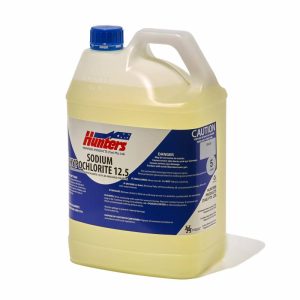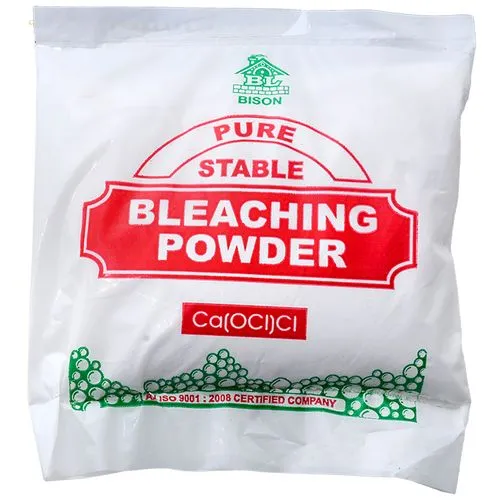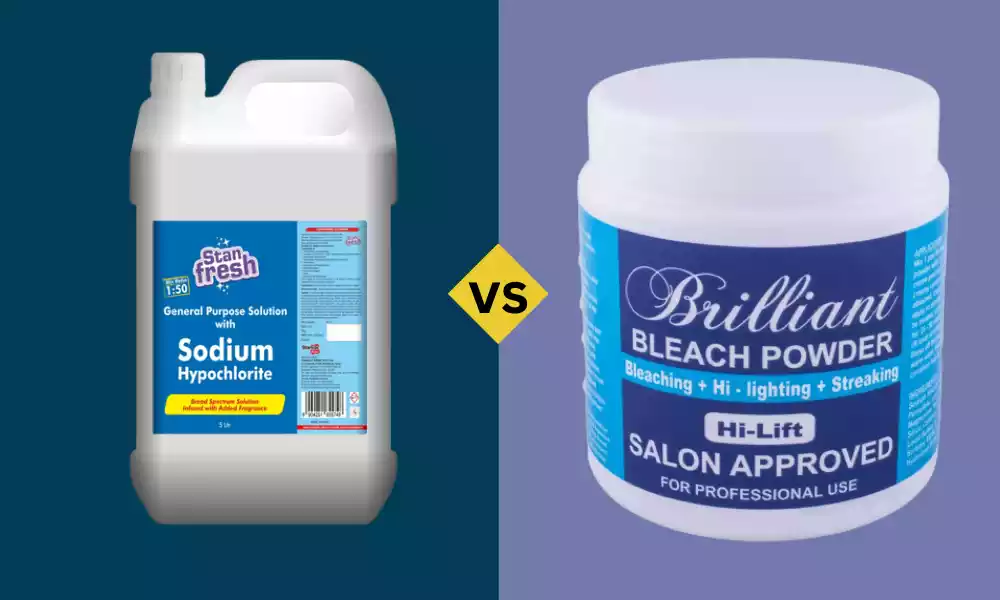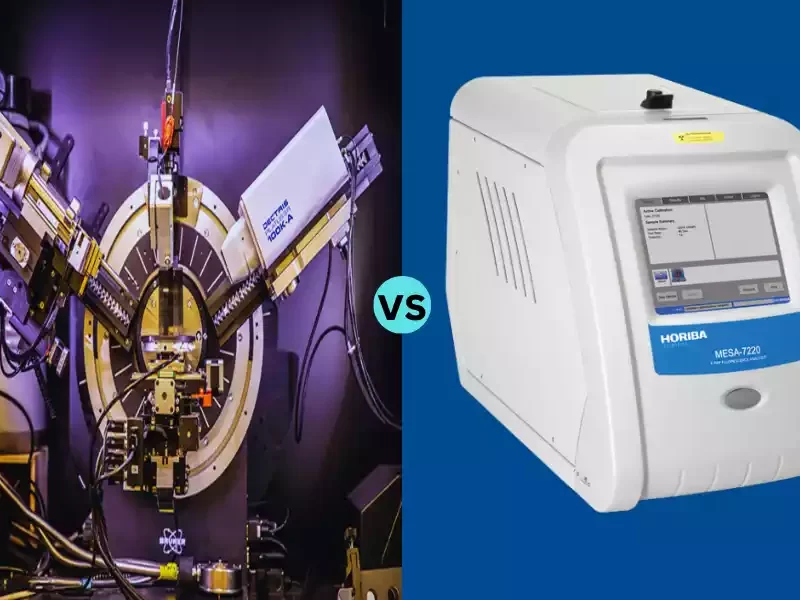Sodium Hypochlorite and Bleaching Powder are the two commonly used chemicals for cleaning and disinfecting.
The sodium Hypochlorite which is commonly found in bleach for household use is a liquid that has an intense smell. It’s ideal for cleaning surfaces, disinfecting, and washing laundry. It eliminates bacteria and the stains. Be cautious when using it, because it can cause harm to your eyes as well as your skin.
Bleaching Powder, on the contrary, is a white powder with a chlorine smell. It is commonly used in the textile business and to treat drinking water. It can bleach clothes and clean water. Like sodium hypochlorite, it is important to take care when handling it since it can be dangerous if it is not handled correctly.
Both chemicals are able to cleanse and disinfect, they come in different forms and applications. Always follow the safety precautions when you use these chemicals.
What is Sodium Hypochlorite?
The sodium Hypochlorite is an ingredient commonly referred to as bleach for household use. It’s a clear liquid that has an intense, distinctive smell and is utilized to disinfect and clean. It’s comprised of oxygen, sodium, and chlorine, giving it the ability to cleanse.

The sodium Hypochlorite is a potent disinfectant and cleaner. It can be used to clean floors, surfaces as well as laundry. It’s excellent at getting rid of viruses, germs, and bacteria. If you’ve got an odor on your white clothing it will help get rid of the tough stains as well as make the clothes appear better.
It could cause irritation to the eyes and skin and eyes, which is why it’s crucial to use it in a safe manner. Always follow the directions in the package, dilute it correctly, and stay clear of mixing it in with different chemicals particularly ammonia as it can produce harmful gaseous emissions.
Sodium Hypochlorite is an effective instrument for disinfection and cleaning however, using it with caution is crucial.
Sodium Hypochlorite Formula
The chemical formula of sodium hypochlorite can be described as NaClO. It is composed of the sodium (Na) atom as well as the chlorine (Cl) Atom along with an oxygen (O) atom. The term sodium hypochlorite is used as a bleach for household use and is utilized to disinfect and has bleaching properties.
What is Bleaching Powder?
Bleaching Powder also known as calcium hypochlorite is a white, powder that has the odor of chlorine. It’s a chemical utilized for different purposes, particularly in the cleaning process and in disinfection. The powder is composed of oxygen, calcium, and chlorine. They create its bleaching and cleaning properties.

One of the main applications is in the industry of textiles to brighten and whiten textiles. It is able to remove stains that are stubborn and help clothes appear new and fresh. Bleaching Powder can also be used to disinfect water sources and is safe to drink by eliminating harmful microorganisms such as viruses and bacteria.
It is essential to be careful when handling Bleaching Powder carefully. When it is concentrated it could cause irritation to the eyes and skin So, taking the appropriate precautions is required.
Combining Bleaching Powder with different chemicals such as ammonia must be avoided since it may cause dangerous fumes. When properly used and handled Bleaching Powder can be an effective tool to make things more white and safer at home in the laundry, and when it comes to water purification.
Bleaching Powder Formula
Chemical formulas for bleaching are Ca(OCl)2. It is composed of just one calcium (Ca) atom as well as two hypochlorite (OCl-) ions as well as two chlorine (Cl) molecules. Bleaching powder, sometimes referred to as calcium hypochlorite is utilized to bleach and disinfect properties, especially in the textile industry as well as water purification.
Key Difference Between Sodium Hypochlorite and Bleaching Powder
Here’s a simplified comparison chart highlighting the key differences between Sodium Hypochlorite and Bleaching Powder:
| Criteria | Sodium Hypochlorite | Bleaching Powder |
|---|---|---|
| Chemical Formula | NaClO | Ca(OCl)2 |
| Molecular Structure | Na⁺-O-Cl⁻ | Ca²⁺-(OCl)₂⁻ |
| Physical State | Liquid | Powder |
| Color | Clear or light yellow | White to pale yellow |
| Odor | Characteristic bleach odor | Chlorine-like smell |
| Solubility | Soluble in water | Partially soluble in water |
| Production Process | Electrolysis of salt solution | Chlorination of dry-slaked lime |
| Applications | Water treatment, disinfection, bleach | Textile and paper industries, disinfection |
| Chemical Reactivity | Highly reactive, decomposes easily | Releases chlorine when reacted with water |
| Stability | Less stable, degrades over time | Relatively stable when dry, less stable in solution |
| Storage | Should be stored in a cool, dark place | Store in a cool, dry place away from sunlight |
| Safety Considerations | Corrosive and can release toxic fumes | Can release chlorine gas if mixed with incompatible substances |
| Environmental Impact | May contribute to water pollution | May release chlorine, impacting the environment |
| Cost | Generally less expensive | Cost may vary depending on purity and source |
| Availability | Widely available, common household bleach | Commonly available for industrial use |
What are the characteristics of sodium hypochlorite
The chemical compound has a number of notable properties:
- Chemical Formula: Its chemical formula is NaClO, which signifies it is a mixture of sodium (Na) and hypochlorite (ClO-) ions.
- Liquid form: Sodium hypochlorite is typically present in liquid form and is usually diluted with water. It is often called household bleach.
- The Strong Odor: It’s a distinctive, sometimes unpleasant smell, that is typical of chlorine-based chemicals.
- Disinfectant and Bleaching Agent: Sodium Hypochlorite is an effective bleaching and disinfectant agent. It effectively kills bacteria as well as viruses and microorganisms. It is therefore useful in the field of sanitation.
- The Oxidizing Agent: It displays powerful oxidizing properties which means it helps get rid of stains, make fabrics whiter, and break down organic matter.
- Active ingredient: The active ingredient in bleach sodium hypochlorite is the main active ingredient in many household bleaches that are used to clean the laundry, disinfection, and cleaning.
- Corrosive: It is damaging and could cause bleaching to certain substances, therefore it is recommended to use it carefully and not combine together with any other chemical.
- Shelf Life: Shelf Life is a bit limited. shelf life and its effectiveness diminishes with time, particularly when exposed to air and light.
- Safety Warnings: Due to the potential for eye and skin irritation It is recommended to handle and store in a safe manner and should not mix with any other chemicals used in household use, including ammonia, since it could create toxic fumes.
- Water treatment: Sodium hypochlorite can be used to purify and disinfect drinking water as well as swimming pool water.
What are the Characteristics of Bleaching Powder?
Bleaching powder also referred to as calcium hypochlorite is an organic compound that has its formula Ca(ClO)2. It is extensively used to bleach, disinfection as well as water purification.
Here are a few advantages of bleaching powder:
- Chemical Composition: The principal chemical bleaching powder components comprise calcium chloride (CaCl2) and calcium hypochlorite (Ca(ClO)2).
- Odor and Color: Bleaching powder is typically a light or white-yellowish powder that has an odor that resembles chlorine.
- Solubility: It is not very insoluble within water. If it disintegrates there is a release of chlorine gas that has disinfecting and bleaching properties.
- Bleaching Effect: Bleaching powder is an extremely powerful oxidizing agent. It is used extensively for bleaching paper pulp, textiles, and hair. It releases an oxygen gas that reacts with colored substances and then breaks them into pieces.
- Properties of disinfectants: Due to its capability to release chlorine, bleaching powder can be a powerful disinfectant. It is used to clean drinking pool water, swimming pools, and even surfaces.
- Composition: The powder that bleaches is unstable when exposed to heat, moisture, and light. It can decompose in the presence of chlorine gas, as well as calcium chloride. It is best kept in a cool, dry location.
- pH: In solution, bleaching powders can alter the acidity of the solution. It makes the solution more alkaline.
- Applications for Use in Water Treatment: Bleaching powder is used extensively for the cleansing of drinking water. It assists in eliminating microorganisms as well as bacteria which makes drinking water safe to drink.
- Storage and handling: Storage and handling Because of its insanity bleaching powder must be kept in a sealed airtight container to stop moisture from getting in. It must be handled with care as well as contact with acid must be avoided.
- Safety Tips: As with any chemical, safety precautions should be used when working with bleaching powder. Safety equipment, like Goggles and gloves, must be worn. The inhalation of powder or the fumes from it should be avoided.
What is sodium hypochlorite and Bleaching Powder solution used for?
Sodium Hypochlorite Solution (Household Bleach):
- Disinfection: Solutions containing sodium hypochlorite are typically used to disinfect the environment. They are employed to clean surfaces, kitchenware, as well as drinking water to eliminate viruses, bacteria, and other harmful microorganisms.
- The Laundry: The product is utilized as bleach for laundry to clean up stains and whiten clothes.
- Cleansing: Sodium hypochlorite is utilized for general cleaning to remove sanitize, mildew and mold from surfaces.
- Water Treatment: In certain instances, it could be used to treat water for purification the water in swimming pools and drinking water in times of emergency.
Bleaching Powder Solution (Calcium Hypochlorite Solution):
- Textile Industries: Solutions made of bleaching powder are utilized to bleach and whiten textiles used in the industry which makes them ideal for printing and dyeing.
- Water Treatment: Dilute solutions can be utilized to disinfect and purify swimming pool water, drinking water, and wastewater.
- Sanitation: For certain industrial commercial and commercial cleaning processes, bleaching powders are employed for sanitation purposes, to disinfect equipment and surfaces.
Environmental impact of sodium hypochlorite and bleaching powder
The bleaching powder and sodium hypochlorite could have significant environmental effects mostly because of the release of hypochlorite and chlorine ions into the environment. The chemicals, when released in large amounts, could possibly harm aquatic ecosystems and alter their balance in the ecosystem.
Using these chemicals in water treatment could result in the creation of toxic disinfection products that could be hazardous to human health as well as the environment. Proper management, handling the disposal and removal of chemicals is vital to minimize their environmental impact as well as ensure the protection of water resources and ecosystems.
Pros and Cons of Sodium Hypochlorite vs. Bleaching Powder for Laundry
Sodium Hypochlorite:
Pros:
- Effective Disinfection: The sodium hypochlorite compound is a potent disinfectant that is capable of killing harmful microorganisms, such as viruses and bacteria.
- Stain removal: It is highly effective in removing tough staining from surfaces and fabrics which makes it an ideal tool for cleaning and laundry.
- Cleaning: Hypochlorite sodium can lighten and whiten clothes and restore the original hue of clothes.
- Multi-purpose: It has a broad range of applications such as laundry, cleaning, and even water treatment.
Cons:
- Fabric Deterioration: Prolonged or excessive use of sodium hypochlorite may cause deterioration and weakness of textiles over time.
- Irritation: The chemical could cause irritation to the eyes and skin and should be handled with attention.
- Fumes: The product produces powerful smells and fumes that may be unpleasant or even dangerous if breathed in.
- Environmental impact: Inappropriate disposal or excessive usage may have negative impacts on the environment particularly ecosystems that are aquatic.
Summary
It is a sodium Hypochlorite also commonly referred to as household bleach is a fluid that cleans, disinfects, and gets rid of stains. It is made up of sodium, chlorine, and oxygen. It’s efficient in eliminating bacteria. But, it may cause irritation to the eyes and skin, be sure to handle it with care.
Bleaching Powder is an uncolored powder with an odor of chlorine that is used to brighten clothes and for cleansing water. It is a mixture of oxygen, calcium, and chlorine, which kills harmful microorganisms.
But, it should be used with care in order to protect the eye from irritation and skin irritation. Combining it with other chemicals can be dangerous. The two Sodium Hypochlorite, as well as Bleaching Powder, are powerful cleaning agents, and proper handling is vital for security.



